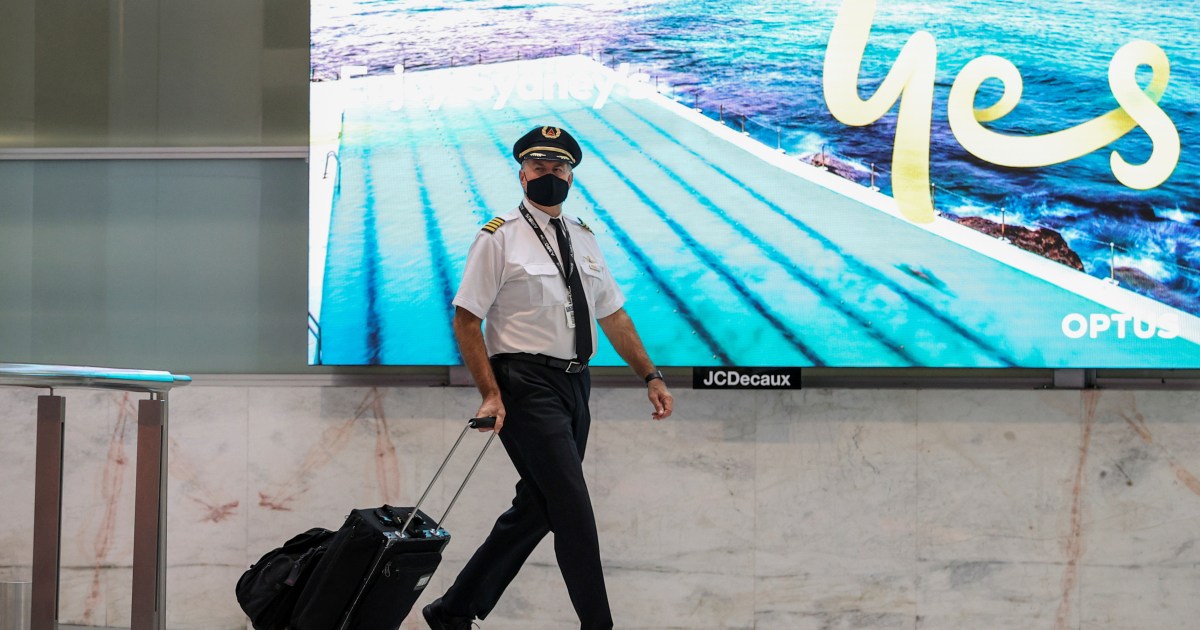
After nearly two years of stringent border closures designed to protect its citizens from the ravages of the COVID-19 pandemic, Australia is poised to welcome international tourists once again. The announcement, made in early February 2022, signals a significant shift in the nation’s approach to managing the virus and a renewed focus on revitalizing its vital tourism sector. From February 21, 2022, vaccinated travelers from around the globe will be able to experience the unique landscapes, vibrant cities, and rich cultural heritage that Australia has to offer.
The decision to reopen Australia’s borders marks the end of a long period of isolation that has profoundly impacted the country’s economy, particularly its tourism industry. Since the onset of the pandemic, Australia has implemented some of the strictest border controls in the world, effectively shutting down international travel and severely limiting domestic movement. While these measures were successful in containing the spread of the virus, they came at a significant cost, with the tourism sector bearing the brunt of the economic fallout.
Prior to the February 21st reopening announcement, a limited number of travelers from select countries, including New Zealand, Japan, Singapore, and South Korea, had been permitted to enter Australia since November 2021. This initial phase of reopening served as a trial run, allowing authorities to refine their protocols and ensure the safe and efficient processing of international arrivals. The success of this pilot program paved the way for the broader reopening to all vaccinated tourists, signaling a growing confidence in the country’s ability to manage the risks associated with international travel.
The reopening of Australia is contingent upon several key requirements. All international arrivals, with limited exceptions, must be fully vaccinated against COVID-19 and provide proof of vaccination upon arrival. The accepted vaccines are those approved by the Therapeutic Goods Administration (TGA) in Australia. Travelers should check the TGA website for the most up-to-date list of approved vaccines. Acceptable forms of proof include a vaccination certificate issued by a national or state-level health authority, or a digital vaccination record that can be verified by Australian border officials.
Recognizing that some individuals may be unable to receive the vaccine due to medical reasons, the Australian government has established an exemption process. Individuals seeking an exemption must provide written documentation from a registered medical practitioner outlining the medical contraindication that prevents them from being vaccinated. This documentation will be carefully reviewed by border officials, and exemptions will be granted on a case-by-case basis.
The driving force behind this policy change is the significant economic impact of the border closures on Australia’s tourism industry. Over the past two years, the country has suffered staggering losses in tourism revenue, estimated to be in excess of 101 billion Australian dollars (approximately $72 billion USD). This figure encompasses both international and domestic spending, highlighting the widespread impact of the pandemic on all segments of the tourism sector. Prior to the pandemic, international expenditure alone amounted to over 44 billion Australian dollars annually. This figure plummeted to a mere 1.3 billion Australian dollars during the period of border closures, underscoring the urgent need to revitalize the industry.
In a statement announcing the reopening, Prime Minister Scott Morrison emphasized the importance of this decision for the country’s economic recovery. "Today’s announcement will give certainty to our vital tourism industry, and allow them to start planning, hiring, and preparing for our reopening," he stated. The Prime Minister’s remarks reflect the government’s commitment to supporting the tourism sector and ensuring its long-term sustainability.
The announcement of the border reopening has been met with enthusiasm by the tourism industry and investors alike. Shares in Qantas Airlines, Australia’s national carrier, and Flight Centre Travel Group, a leading travel agency, experienced a significant surge following the announcement, indicating renewed investor confidence in the sector. Qantas CEO Alan Joyce has stated that the airline is actively developing strategies to resume international flights and rebuild its network.
While the reopening of Australia is welcome news for international travelers, those hoping to visit neighboring New Zealand will have to wait a little longer. According to statements from Prime Minister Jacinda Ardern, tourists from visa-free countries, including the United States, will not be permitted to enter New Zealand until July. This phased approach to reopening reflects New Zealand’s cautious approach to managing the pandemic and its commitment to protecting its citizens.
Beyond the immediate requirements for vaccination and documentation, travelers planning a trip to Australia should be aware of other potential entry requirements and health protocols. These may include pre-departure testing, quarantine upon arrival (though this is increasingly unlikely), and adherence to local health guidelines. It is essential to check the latest travel advisories and government websites for the most up-to-date information before making any travel arrangements.
Australia is a vast and diverse country, offering a wide range of experiences for travelers of all interests. From the iconic Sydney Opera House and Harbour Bridge to the breathtaking landscapes of the Great Barrier Reef and the Outback, there is something for everyone to discover. Visitors can explore vibrant cities, immerse themselves in Aboriginal culture, relax on pristine beaches, and encounter unique wildlife.
The reopening of Australia’s borders marks a new chapter in the country’s recovery from the COVID-19 pandemic. While challenges remain, the government’s commitment to supporting the tourism industry and its careful management of the reopening process provide grounds for optimism. As the world continues to adapt to the new realities of travel, Australia is poised to once again welcome international visitors and share its unique beauty and culture with the world.
For potential travelers, this is a golden opportunity to plan a trip to a country that has been off-limits for far too long. As the seasons in the Northern Hemisphere shift to spring, Australia will be moving into autumn, offering a mild and pleasant climate for exploration. With its stunning natural beauty, vibrant cities, and warm hospitality, Australia promises an unforgettable travel experience.